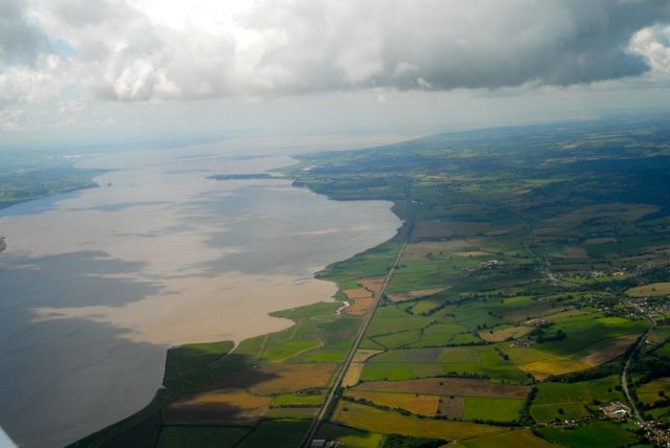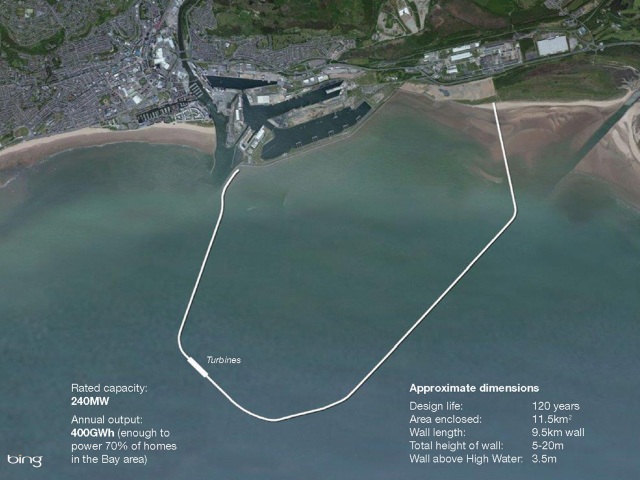The British government is reviewing a $1.47bn proposal that details the construction of the world’s first man-made tidal lagoon.
It will be built solely for the purpose of generating green energy.

Should this enormous system actually be built, it would harness the tides from the Severn Estuary, which separates England from Wales.

Early predictions suggest the lagoon as proposed would be able to power 155,000 homes for 120 years. Tidal Lagoon Power (TLP), the company that would ultimately see this project through, estimates it would require subsidies of about $250USD per megawatt hour (MWh), a figure much more expensive than other low carbon energy options.
The goal, though, is to drive that price down, and this can be accomplished by building not just one lagoon, but rather five of them, per TLP.
A treasury spokesman for the British government told AFP that talks would begin soon “to assess whether it is an affordable opportunity, and whether the proposal is value for money”.
In terms of specs, the project suggests building a six-mile seawall in the Severn Estuary, complete with 16 hydro turbines located all throughout the surrounding Swansea Bay.


The reason this particular location was selected is because the waters here rise and fall by as much as 35 feet.

In terms of where the project is, and where it’s going, the local authority at Swansea Bay still needs to formally accept and, in turn, permit the actual planning of this project (that is, everything is still speculative right now). Should everything be approved, and should the developers not experience any hiccups along the way, it is estimated the lagoon can be built and connected to the national power grid by 2019, whereupon it would begin providing 495,000 MWh every year.
“It's a game-changer. In a single step it presents the option to harness indigenous, renewable electricity at a low cost and a nuclear scale,” said Mark Shorrock, chief executive of Tidal Lagoon Power.
“These projects can now be developed relatively quickly and will outlive all of us. The government recognizes that we cannot afford to overlook these opportunities.”
Worth noting is a similar project that’s already underway: in the Pentland Firth, which is located off northeast Scotland, authorities are implementing a tidal power system for powering 175,000 homes with electricity. The difference, though, is this group is placing underwater turbines without any additional measures of control in place — the Severn Estuary project, on the other hand, will use an artificial seawall, thus making it the first “man-made” lagoon built solely for the purpose of converting tidal energy into usable power.
Via Phys.org
Advertisement
Learn more about Electronic Products Magazine





